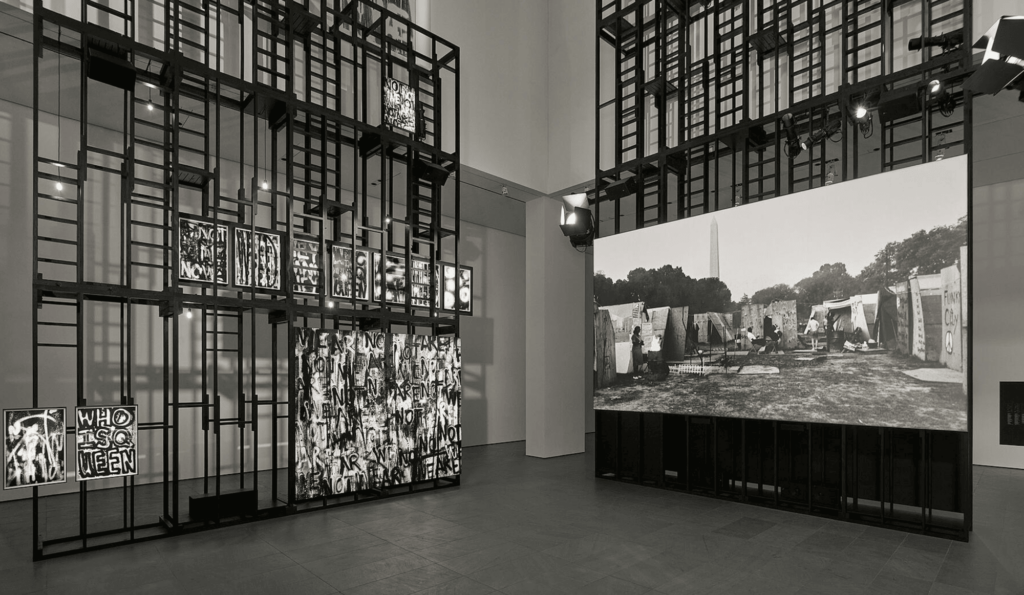Case Example: Planning for Disassembly and Repurposing
Adam Pendleton: Who Is Queen? exhibition
Museum of Modern Art (MoMA)
New York, New York

As part of their broad climate commitments, the Museum of Modern Art (MoMA) in New York established policies and actions to reduce waste associated with their exhibitions. This approach insists on standardizing display cases and establishing an inventory for their reuse. For wall structures, MoMA established an ‘evergreen condition’ for every MoMA gallery. This policy indicates specific walls that will never change as they are designed for adaptability with pre-framed openings that can open or close. For other temporary walls, MoMA makes extensive use of modular walls. For more detail, see the MoMA case example “Design Reset for Circularity“.
While MoMA maintains their commitment to circular exhibition development, designers for the Adam Pendleton: Who Is Queen? exhibition envisioned a tall structure bespoke specifically for this exhibition. The dramatic staging was important to the visitor experience they sought to create.
Given these design parameters, the challenge was how to minimize or avoid waste. The materials chosen for the huge scaffold structures was wood –which has a lower embodied carbon than metal (unless that metal is reclaimed).
MoMA committed to unbuilding the structure rather than demolishing it at the end of the exhibition. The structures were carefully disassembled to save as many whole pieces as possible. The lumber was donated back to the production house that built the scaffold for them to reuse in future projects.